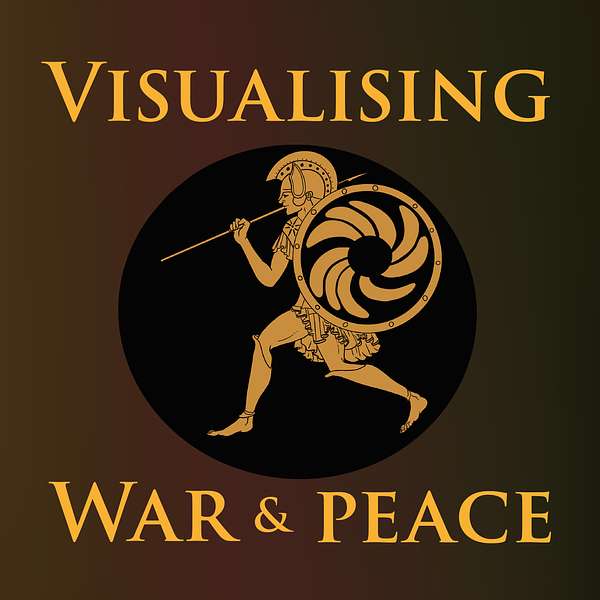
Visualising War and Peace
How do war stories work? And what do they do to us? Join University of St Andrews historian Alice König and colleagues as they explore how war and peace get presented in art, text, film and music. With the help of expert guests, they unpick conflict stories from all sorts of different periods and places. And they ask how the tales we tell and the pictures we paint of peace and war influence us as individuals and shape the societies we live in.
Visualising War and Peace
Reading and Treating War Wounds with Emily Mayhew
In this week's episode, Alice talks to Dr Emily Mayhew, a historian of medicine at Imperial College, London. Emily specialises in the study of severe casualty - its infliction, treatment and long-term outcomes in 20th and 21st century warfare. Recently, she has worked particularly closely with researchers and staff at the Royal British Legion Centre for Blast Injury Studies, based at Imperial College, and she is part of the team that put together the ground-breaking Paediatric Blast Injury Field Manual. She has published a trilogy of books on war wounds from WW1 to Afghanistan: 'Wounded: the Long Journey Home from the Great War', 'The Guinea Pig Club: Archibald McIndoe and the RAF in World War Two', and 'A Heavy Reckoning: War, Medicine and Survivial in Afghanistan and Beyond'. In the podcast we also talk about her latest book, 'The Four Horsemen: War, Pestilence, Famine and Death, and the Hope of a New Age'.
The episode begins with Emily discussing the kinds of wounds that became a common feature of the two World Wars, what those wounds can tell us about the political and military strategies that were being followed, and how medical science adapted to treat them. With advances in medical practice, more and more servicemen ended up surviving their wounds - and that gets us talking about public perceptions of injury and disability. In contrast to soldiers who lost limbs during WW1, for example, pilots who survived terrible burns during WW2 often found themselves feted by an admiring public. That gets us thinking about the experience of more recent veterans, from the conflicts in Iraq and Afghanistan, and the profound effects that blast injuries have long after the blast itself. Emily touches on the foundation of the International Committee of the Red Cross, the birth of humanitarianism - and what happened in 2016 in Mosul, when for the first time in its history the Red Cross did not get involved. We discuss the role of historians alongside medics and humanitarian organisations in providing a line of defence against War, Pestilence, Famine and Death - and how valuable those ancient Horsemen are in helping us visualise what is at stake. Along the way, Emily stresses the disproportionate impact of war and man-made famines on children - the often unseen victims of conflict.
Among other questions, Alice asked:
- how do wounds help us visualise war itself?
- what 'iconic' wounds do we associate with different wars, and why?
- what wounds remain less visible, or less understood?
- how has the general public responded to war wounds over time, and what has shaped their understanding and attitudes?
- how interconnected is the history of warfare and the history of medicine?
- what difference does it make to visualise war as one of the Four Horsemen of the Apocalypse?
- how optimistic should we feel about our ability to keep those Horsemen at bay in future?
We hope you enjoy the episode!
*Please note: this episode was recorded in spring 2021, before the Taliban took control of Afghanistan. Some references to Afghanistan are therefore out of date.
For a version of our podcast with close captions, please use this link. For more information about individuals and their projects, access to resources and more, please have a look on the University of St Andrews Visualising War website.
Music composed by Jonathan Young
Sound mixing by Zofia Guertin